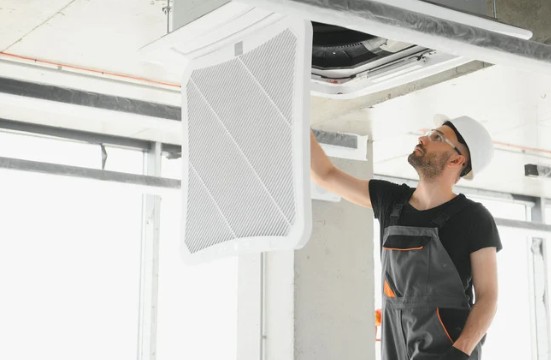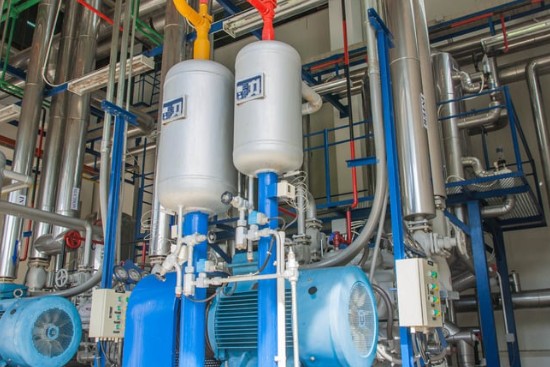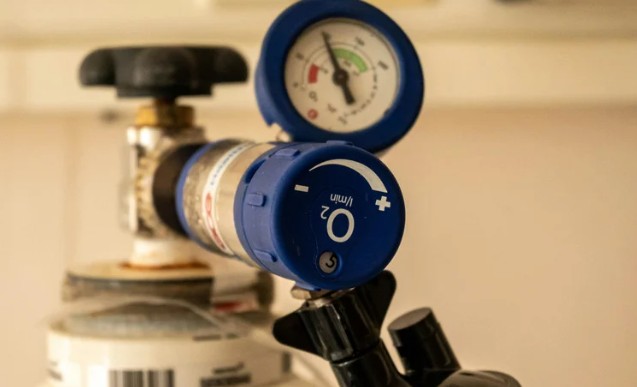As urban development intensifies and real estate costs climb, maximizing every square inch of operational space has become a critical priority for businesses.
From bustling workshops to high-tech laboratories, the need for efficient, powerful, and compact equipment is greater than ever. Air systems—essential for everything from pneumatic tools to climate control—have traditionally been bulky, occupying valuable floor space.
However, a new wave of innovative designs is changing the game, proving that powerful performance can come in small packages.
This shift towards miniaturization and integration allows facilities to reclaim space, streamline layouts, and enhance operational flexibility. This article explores four groundbreaking designs for space-saving air systems that deliver robust performance without a large footprint.
1. Vertical and Stackable Compressor Units
One of the most effective strategies for saving floor space is to think vertically. Traditional horizontal tank compressors can have a large footprint, making them difficult to place in crowded environments. In response, manufacturers have developed vertical compressor designs that stack the motor and pump assembly directly above the air receiver tank.

This simple yet brilliant change can cut the required floor space by more than half compared to a horizontal unit of the same capacity.
Beyond individual vertical units, modular and stackable systems offer even greater flexibility. These designs allow multiple smaller compressors to be stacked securely on top of one another or mounted on a shared frame. This approach is particularly useful for businesses with fluctuating air demands, as they can add or remove units as needed without reconfiguring their entire workspace.
For example, a growing auto repair shop can start with a single stackable unit and add more as their business expands, all within the same compact vertical footprint. This not-alot-of-room approach not only saves space but also provides scalability and redundancy.
2. Tankless and Point-of-Use Air Compressors
Why have a large, centralized air tank when you can generate compressed air exactly where you need it? Tankless and point-of-use compressors eliminate the need for a bulky air receiver by providing on-demand air directly to a specific tool or application.
These units are exceptionally compact—some are small enough to be carried by hand or mounted directly onto a workbench or piece of machinery.
This design is ideal for applications where intermittent air is required, such as in dental offices, small-scale manufacturing, or for powering individual pneumatic workstations.
By decentralizing the compressed air supply, businesses can eliminate the extensive and often leaky piping required by a central system, further reducing maintenance costs and improving energy efficiency.
Tankless models, including many high-quality fractional hp pumps, deliver instant pressure when activated and are incredibly efficient for specific, targeted tasks, representing a major leap forward in space-conscious design.
Also Read: Designs for Space-Saving Air Systems
3. Integrated and Enclosed Rotary Screw Compressors
Rotary screw compressors are known for their ability to provide a continuous, high-volume supply of air, making them a popular choice for demanding industrial applications. Traditionally, these have been large, noisy machines requiring a dedicated utility room.

However, modern designs have integrated all necessary components—the compressor, motor, air-oil separator, and cooling system—into a single, compact, and fully enclosed cabinet.
These “all-in-one” units are often referred to as “tank-mounted rotary screw compressors” when they include an integrated air receiver. The enclosure not only significantly reduces the physical footprint but also drastically lowers noise levels, with some models operating at whisper-quiet decibels.
This allows them to be installed directly on the production floor, close to the point of use, eliminating the need for a separate compressor room. This frees up valuable real estate for revenue-generating activities while still providing the reliable, continuous-duty performance that industrial operations depend on.
4. Compact Multi-Functional Air Treatment Systems
Producing compressed air is only half the battle; ensuring it is clean and dry is equally important for protecting sensitive downstream equipment and ensuring product quality. In the past, this required a series of separate components: a filter, a dryer, a regulator, and a lubricator, each taking up space along the air line. Today, innovative designs combine these functions into a single, compact unit.
These integrated air treatment systems, or “air-prep” units, are designed to attach directly to the compressor outlet or at the point of use. They filter out particulates, remove moisture, and regulate pressure within one streamlined housing.
This not only saves a significant amount of space compared to installing individual components but also simplifies installation and maintenance. For facilities where air quality is critical, such as in food and beverage production or electronics manufacturing, these multi-functional units provide a space-efficient solution to ensure a clean, dry, and reliable air supply without cluttering the workspace.










